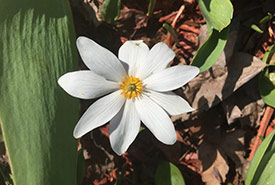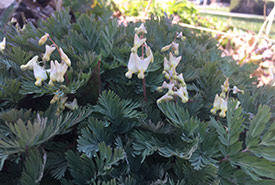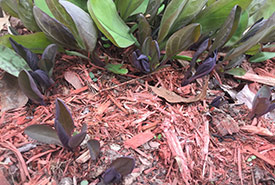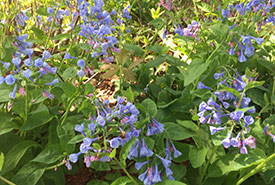The Wildflower Blog: Three favourite wildflowers to grow

Bloodroot (Photo by Thomas Noland)
Bloodroot, Dutchman's breeches and Virginia bluebells are three lovely spring-blooming wildflowers that are worthy of any flower garden, not just a wildflower garden. In my garden, its always a race between bloodroot and Dutchman's breeches for the first to fully bloom. This year it was bloodroot by a nose.

Dutchman's breeches (Photo by Thomas Noland)
Bloodroot and Dutchman's breeches are early spring-bloomers that are true spring ephemerals (plants that grow quickly during a short period of time in early spring). They will die down by summertime. Bloodroot's bright white flowers and yellow stamens are a welcome early spring sight in my garden. However, the little white Dutch pantaloons dangling from stems are probably the cutest flower in my garden. They both require partial or dappled shade for best blooming, and moist, rich soil conditions. Both plants are often available from nurseries and large garden centres, which are the best sustainable sources.
If you are looking to expand your own garden populations, or have a generous friend with these plants in their garden, you can also try to propagate these species by seed or root cuttings. Although both can be grown from seed, I do not recommend that method, because it is not easy since you have to use fresh seed and sow it immediately before the seeds dry out. They are much easier to propagate vegetatively from root cuttings for bloodroot and little bulblets for Dutchman's breeches.
The best planting time for both species is early spring for plants or late spring if you are planting fresh seed. Interestingly, bloodroot seeds have a fatty appendage called an eliasome that makes them attractive to ants who collect them, eat the appendage, and then discard the seed in their plant trash pile (an ant compost pile), which serves as an excellent medium for the fresh seed to germinate in.

The purple foliage of emerging Virginia bluebells plants (Photo by Thomas Noland)
Virginia bluebells are mid-spring bloomers and have gorgeous purple foliage when they emerge from the soil in the spring. Bluebells are also a spring ephemeral that dies to the ground in the summer. The flowers are beautiful sky blue in colour and are one of the highlights of my mid-spring wildflower garden.

Virginia bluebells (Photo by Thomas Noland)
They need moist, rich soil and dappled or high shade for best growth and flowering. In a good site, they will self-seed and spread through your garden, and some may find that they spread aggressively, but only under ideal growing conditions. Both seeds and plants can be purchased from nurseries. I actually purchased mine at a local horticultural society plant sale. If you plant seeds, it is best to sow fresh seeds immediately or you will need to stratify the seeds under cool (4 C), moist conditions for six weeks before sowing. Virginia bluebells are considered vulnerable in Ontario.
Next blog will feature three more spring blooming wildflowers and how to grow them.

